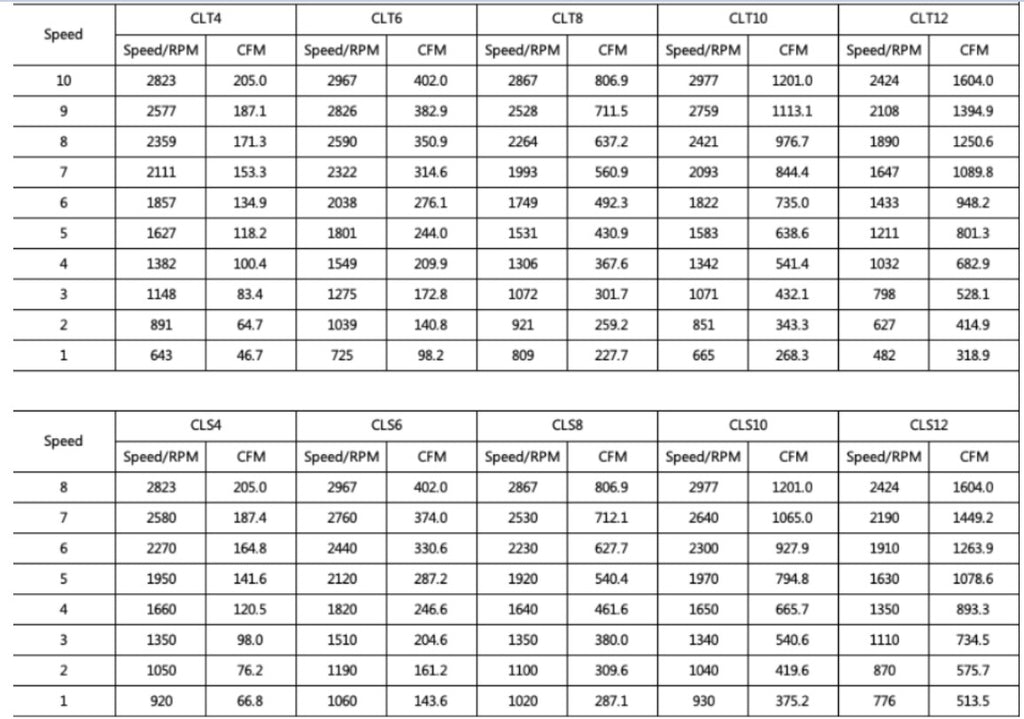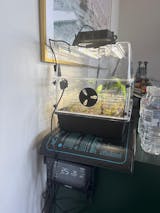How to Calculate the Size of an Exhaust Fan for Your Grow Space
How to Calculate the Size of an Exhaust Fan for Your Grow Space
Proper ventilation is crucial for maintaining a healthy and productive grow space. One of the key components of an effective ventilation system is the exhaust fan. Choosing the right exhaust fan size for your grow space can help control temperature, humidity, and ensure that your plants receive fresh air. In this article, we will guide you through the process of calculating the size of the exhaust fan you need for your grow space.
Step 1: Determine the volume needed for your grow space
To calculate the size of the exhaust fan, you first need to determine the volume of your grow space. Measure the length, width, and height of your grow room in feet. Then, use the following formula to calculate the volume:
Volume (cubic feet) = Length (ft) × Width (ft) × Height (ft)
Step 2: Calculate the CFM (cubic feet per minute) needed
The next step is to determine the required air exchange rate, which is measured in CFM (cubic feet per minute). This will give you an idea of the fan's capacity needed to effectively ventilate the space. As a rule of thumb, you should aim for a complete air exchange every 1-3 minutes for optimal results. We will use an exchange rate of once every minute for this calculation.
Required CFM = Volume (cubic feet) / Air exchange time (minutes)
Step 3: Consider additional factors
In addition to the basic CFM calculation, there are a few additional factors to consider:
A. Filter Efficiency Loss: If you are using a carbon filter in your ventilation system, it can reduce the efficiency of the exhaust fan. To account for this, increase the required CFM by 25%.
Adjusted CFM = Required CFM × 1.25
B. Ducting and bends:
The presence of ducting and bends in your ventilation system can create resistance, reducing the efficiency of the exhaust fan. For every 10 feet of straight ducting, add 10% to the CFM. For each 90-degree bend, add 20%. For each 45-degree bend, add 10%.
Adjusted CFM = Adjusted CFM × (1 + sum of resistance factors)
Step 4: Choose an exhaust fan with the right capacity
Now that you have calculated the adjusted CFM, you can choose an exhaust fan with the appropriate capacity. It is recommended to choose a fan with a slightly higher CFM than your calculation to ensure optimal performance.
Conclusion: By following these steps, you can accurately calculate the size of the exhaust fan needed for your grow space. A properly sized exhaust fan will help you maintain a healthy environment for your plants, leading to better growth and higher yields. Remember to regularly clean and maintain your exhaust fan to ensure its efficiency and longevity.
EXAMPLES
Let's work through an example using a grow space with the dimensions 2.4m x 1.2m x 2m, a carbon filter, and 2 metres (6.56 feet) of ducting.
With the grow space dimensions: 2.4m x 1.2m x 2m First, we need to convert these dimensions to feet: 2.4m = 7.87 ft 1.2m = 3.94 ft 2m = 6.56 ft
Step 1: Determine the volume of your grow space Volume
(cubic feet) = Length (ft) × Width (ft) × Height (ft)
Volume = 7.87 ft × 3.94 ft × 6.56 ft ≈ 203.81 cubic feet
Step 2: Calculate the CFM (cubic feet per minute) needed Required
CFM = Volume (cubic feet) / Air exchange time (minutes) For a complete air exchange every 1 minute: Required CFM = 203.81 cubic feet / 1 minute ≈ 203.81 CFM
Step 3: Consider additional factors
A. Filter Efficiency Loss: If you are using a carbon filter, increase the required CFM by 25%. Adjusted CFM = Required CFM × 1.25
Adjusted CFM = 203.81 CFM × 1.25 ≈ 254.76 CFM
B. Ducting and bends
Since we have 2 meters (6.56 feet) of straight ducting, we need to account for the resistance it adds. Let's assume there are no bends in this example. For every 10 feet of straight ducting, add 10% to the CFM. Resistance factor = 6.56 ft / 10 ft × 10% ≈ 6.56% Adjusted CFM = Adjusted CFM × (1 + sum of resistance factors) Adjusted CFM = 254.76 CFM × (1 + 0.0656) ≈ 271.34 CFM
Step 4: Choose an exhaust fan with the right capacity
Now that you have calculated the adjusted CFM, you can choose an exhaust fan with the appropriate capacity. It is recommended to choose a fan with a slightly higher CFM than your calculation to ensure optimal performance.
In this example, an exhaust fan with a capacity of around 280-300 CFM would be a suitable choice for the grow space. Keep in mind any corners/bend of the ducting will add the need for more power, and you want to avoid running at max speed all the time, so picking a bigger fan is always advised. In this case pick either a T6 or a T8 (to have the extra power on hot days).
To better help pick a fan, please see the various fan speeds and CFM on every AC Infinity Cloudline fan:




